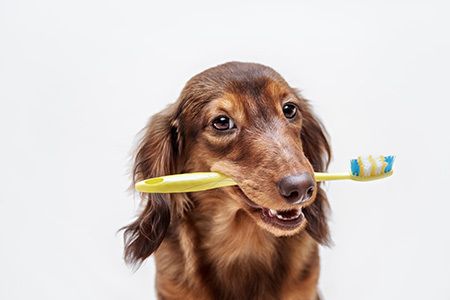Get to the CORE of veterinary dental care with your clients
From the exam room to the pets home, comprehensive oral and radiographic evaluation dental procedures are importantbut how do you get your veterinary clients to agree with you? Heres help.

brusnikaphoto/stock.adobe.com
Let's bring light to the ways that we can create value for what we have to offer when it comes to veterinary dental care. If the client is to say "yes" to your recommendations, they first have to feel your passion and conviction. They have to know, at the end of the day, that dental care is needed now and throughout the pet's life. They must appreciate the value of what you are offering them, and that their pet is higher than the financial cost to their wallet.
So how do you impart the urgency, necessity and complexity of the CORE (Comprehensive Oral and Radiographic Evaluation) dental procedure?
CORE care
First, you need to examine the pet. What you see in the exam room with the client is only a percentage of the disease that is most likely present in the mouth. This visual exam is only the beginning of the clinical exam-a more thorough clinical exam is performed under general anesthesia using an instrument called a dental probe and explorer. The trained veterinary professional can spot "red flags" during this procedure. These observations are vital in creating an initial list of possible concerns that should be communicated to the client.
Even if there are no observable clinical concerns, establishing a baseline of care is extremely important to determine if dental disease is present or absent. Dental disease can be categorized as reversible (gingivitis only) or irreversible (loss of alveolar bone and periodontal ligament attachments, tooth resorption, tooth fractures and other problems). If disease is present, it must be appreciated under anesthesia by a complete clinical oral and radiographic examination-this is what the CORE dental procedure is.
Treatment must take place to bring the mouth back to a healthier state, then an educated plan can be put in place regarding the frequency of the next CORE dental procedure as well as a daily home care plan.
What your hospital offers regarding the CORE dental procedure could be very different than what neighboring hospitals offer. Professional dental care should include a proper pre-anesthetic evaluation and pre-anesthetic lab testing, including urine, blood and fecal. Placement of an intravenous catheter, IV fluid therapy and dedicated monitoring by trained personnel is essential to prevent morbidity or mortality.
Professional anesthetic management and monitoring, including a comprehensive pain management protocol with regional anesthetic blocks as needed, is vital. A comprehensive clinical oral evaluation with the charting of findings, which includes:
- Full-mouth dental radiographs
- Interpretation of these radiographs by the veterinarian
- Professional cleaning and polishing using power and hand instrumentation
- Irrigation of all surfaces
It's also important to remember that a licensed veterinarian should perform extractions and other surgical procedures, and anesthesia and time for this are additional.
Explaining these inclusions when a treatment plan is provided to the client can bring much value to what you are offering compared to others. Some hospitals choose to break down costs individually while others prefer to have one set price for the whole CORE procedure, adding extraction or surgery time, additional anesthetic and monitoring time as well as necessary medications separately. Either method is excellent as long as the cost of the procedure is adequately covered.
You are emphasizing patient safety when it comes to anesthesia and alleviating the client's fears regarding their pet's safety while anesthetized, which is critical to bringing value to what you are offering.
Home care
Once we have established a baseline of dental care with our initial CORE dental procedure, ideally at 6 to 18 months of age, then it is imperative to create an understanding that dental care should be done daily at home as well as annually under anesthesia.
Options for home care can range from hands-on daily brushing of the teeth to dental diets, chews, water additives, gels, rinses and wipes. All of these things can be effective at the goal of daily plaque control, which reduces the numbers of bacteria in the biofilm on tooth surfaces.
The best home care is something that the client will do! If the client is unwilling to commit to doing the work, then home care is non-existent. Combinations of these modalities are even better to prevent plaque and then tartar accumulations, especially under the gum line.
All team members should be aware of the home care products you stock and recommend and be familiar with their use. Creating a written standard and training opportunities for your team helps make home care recommendations successful for the client. Ensuring you have time during the follow-up visit with the pet and the client to demonstrate the proper use of the homecare products that they are committing to use on the pet is vital to making sure the client begins practicing this care at home daily.
The value of what you are doing must always precede price. It is challenging to tell the client what something costs and then back-fill in the value. Strengthening the human-animal bond is all a part of ensuring the pet has a veterinarian and technical team that advocates for a lifetime of wellness care, including dental care. People trust and return to veterinary hospital teams that they believe have their pet's best interests in mind, and they will know if you do not believe dentistry is an essential aspect of veterinary care for the pet.
Benita Altier, LVT, VTS (dentistry), began her business, Pawsitive Dental Education, with the goal of bringing professional dental instruction to veterinary hospitals and conferences across the United States and Canada. She currently resides in Washington.








